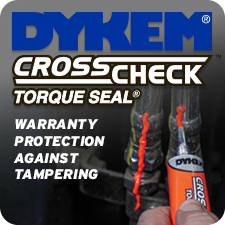Three-D Selling
An integrated sales model for distribution
by Chuck Holmes
 Almost everyone will readily agree that the distribution business has changed dramatically over the last fifty years. Yet most distributors have not applied that same degree of change in managing their sales force.
Almost everyone will readily agree that the distribution business has changed dramatically over the last fifty years. Yet most distributors have not applied that same degree of change in managing their sales force.
The primary — and in some cases, the only — mutually understood measurement of the salesman’s success is sales or gross profit against plan. The target he’s given is vague at best and nonexistent at worst. His or her sales model is the water-on-rock method, and an RFQ is considered a successful outcome.
As it has for years, this sort of selling continues to create problems throughout the company. Company resources such as sourcing and quoting business are consumed by business — doing things for companies that have no reason to buy from us and probably wouldn’t be profitable if they did. The salesperson is frustrated because when he finally does nag an RFQ from the customer, it’s usually met with a distinct lack of enthusiasm and sometimes outright hostility.
From the sales manager’s point of view, one of the greatest problems with the traditional measurement and management systems is — since it provides only a pass-fail evaluation at the end of the process — it offers no real means of evaluating those activities that are essential to creating a customer.
The image is of a man frantically shaking the nozzle of a hose, trying to make water come out of it, totally ignoring the fact that it is not connected to a faucet.
Three-D selling is a sales model that deals with all of these frustrations by creating three distinct steps in the process, each with its own success measure. Specifically, it establishes a level of manageability across the entire sales process, focuses on the customer who meets the company’s qualifications and has a reason other than price to buy from the distributor, and increases the salesperson’s success rate because sales is no longer a numbers game, but a focus of personal and company resources on the highest value targets.
Implementing Three-D Selling requires three things:
- Defining the target
- Training the sales force in the Three-D method
- Managing the Three-D process using meaningful front-end reports
And there’s one other thing, too often ignored until too late: securing top management’s buy-in. If the sales manager is measured on the same old metric, there’s little chance that he or she will really use the new success measure in dealing with the sales force.
DEFINING THE TARGET
The entire Three-D Selling model is based on focusing the energies and efforts of the sales force on the kind of customer the company wants, our “ideal” customer. This is the customer that meets our size and service-level requirements, has acceptable credit, and has a need — preferably a recognized need — for the value-added services we provide.
If, for instance, your company has spent thousands of dollars and hundreds of man-hours developing an operations system that guarantees on-time delivery, a part of the profile will be that the prospect company, if we are to pursue it, has to have a critical need for on-time delivery. Otherwise, the entire selling process will revert to a price fight, a battle often won by the contender who has the least realistic idea of his real costs.
The ideal customer profile should not be long or complex. A three or four sentence paragraph outlining the customer we’re looking for is usually sufficient.
(See the sidebar for an example of the ideal customer profile.)
TRAINING THE SALES FORCE IN THE THREE-D METHOD
Moving the sales force from their current sales behaviors to the Three-D method will probably not be so much training as indoctrination; they probably already have the required skills, even if they don’t usually use them. The first step is to convince them that many of the things that they seem to believe are not true.
- Getting an 18-page RFQ is not a successful outcome.
- Being one of three companies in “three bids and a buy” is not a good competitive position.
- Business is business. We’ll take what we can get.
These need to be replaced with an understanding that we want to sell to people who have a reason to buy from us, who appreciate the value that we add, and who are not going to play us off against every other distributor in the area. We want to concentrate on creating customers rather than just making sales.
Once their belief system has been modified or at least put in neutral, getting them to understand the Three-D’s is relatively simple. They are:
- Determine that the prospect fits the company’s ideal customer profile. The success measure at this point is accurately determining whether this is a valid prospect, and the salesperson should understand that while it is obviously valuable to discover a valid prospect, it is also valuable to determine that the prospect is not valid before spending a lot of time and company resources on it.
- Discover a reason or reasons that the customer should buy from the company. The success measure is finding one or more reasons that the distributor can deliver an obviously greater value (as defined by the customer) than the competition.
- Deliver that reason in a compelling presentation, making certain the customer understands — in dollars — why it will be more profitable to buy from your company than from competitors. The success measure at this stage is creating a customer.
MANAGING THE THREE-D PROCESS
The basis for managing Three-D Selling is a system of three reports, essentially one for each stage of the process.
The first report, submitted monthly, is the funnel report, showing companies currently in the “Determine” stage, those who have moved to the “Discover” stage, and those in the “Deliver” stage. The sales manager wants to see a large group at the top of the funnel and appropriate movement from one stage to the next.
The second report, submitted when the “Discover” activities are completed, is the company profile, providing the vital information about the prospect as well as an assessment of why that prospect should buy from us.
The third report is the call report, substantially like those usually submitted except that there are two additions: why this call was important to the customer, and how it improved our company’s position with the customer or prospect. “Just checking in” is not a reason.
Three-D Selling is a different, more thoughtful approach than many salespeople are used to. However, it can return large rewards to both the salesperson and the company.
A fictionalized account of the Three-D approach to selling
Fred Taylor sat in his office staring at the glass-handled letter opener on his desk. It was probably a good thing they didn’t have a tradition of hari-kari in the fastener business or everybody would be waiting for him to plunge the letter opener into his stomach. According to his last three visitors, he had failed miserably at one part or another of sales management.
Tommy Glenn, the head of the quote department, was just in complaining about the 65-line RFQ that Frank had dropped on his desk. Among other things, Tommy told Fred that all they knew about the customer was that he had a 65-line quote and that he wanted it before the end of the week. They had quoted this customer before and had never gotten any business.
Earlier, Elliott Mayer, the CEO, had been in complaining about sliding gross profits. Sales were essentially flat, gross margin was down, so profits were down. What was Fred going to do about it? He was supposed to be managing sales.
And between unpleasant encounters with Tommy and Elliott, there was Frank Fontaine, one of Fred’s half-dozen salespeople, sitting across the desk from him complaining about Tommy Glenn’s pricing. According to him, he couldn’t sell anything at the prices Tommy was quoting.
It boiled down to too much activity, not enough results, and salespeople who thought they had to buy business. His salespeople were calling on the wrong people, trying to sell the wrong things.
It wasn’t a new set of problems, but all of them crashing together in a single morning made him look at them in a different way.
It was true that Tommy and his department quoted a lot of business the company didn’t get. It was also true that the bulk of the company’s business came from a few large accounts that would probably continue to buy the same thing whether the salesperson called on them or not. And — finally — it was true Fred wasn’t doing much managing at all; he spent most of his time putting out fires and refereeing between salespeople and other departments.
He decided to tackle the first problem first: the deluge of quotes that didn’t result in business. He’d heard Frank and some of the others beg customers for “something to quote.” They didn’t seem to get that a quote cost the company, and the only way to recover that cost was to turn it into business.
He looked at the printout Tommy had left with him: a long list of parts the customer could buy from anybody. Just last week Fred took his salespeople to lunch and talked about the $250,000 machine they had installed. It laser-sampled every piece and kicked out any that didn’t meet specifications. That meant they could guarantee zero defects, saving customers — especially those with automated assembly processes — thousands of dollars. The first
question anybody asked was, “What does this do to the price?”
Fred had also held meetings, sent out memos, and collared the salespeople before and after sales calls about making sure the account was large enough to support the service the company was going to provide, looking for companies that needed made-to-print parts, and avoiding companies with low volumes of thousands of part numbers.
The RFQ in front of him failed on every point. Maybe they just didn’t understand. Fred picked up a ballpoint pen and wrote in large letters across the top: This is our customer.
Under it he wrote: Our customer is a manufacturer with critical quality requirements, is intent on improving his business by lowering his cost, purchases at least $100,000 a year in Type C parts, and is located within 75 miles of our warehouse. We only want to sell to companies that have a good reason to buy from us. He stared at the short paragraph for a minute. There was certainly more to it, but if he could eliminate quotes from companies that really missed this standard, it would cut 50% of the quotes and an even higher percentage of the worthless quotes.
That would cause a lot of moaning and groaning, he thought, since several salespeople approached their territories like door-to-door salesmen. But it would encourage them to call on the right kind of accounts.
Now all he had to do was convince the salespeople that calling on the right kind of accounts and selling the services that made their company different from the others would actually make them more money.
That would take a while, and some of them might never get it.
What did he do with salespeople who insisted on selling in the same old way and creating the same old problems? That was a challenge for another day.
Chuck Holmes is president of Corporate Strategies Inc., an Atlanta company providing training, consulting, and market research to distribution. He can be reached at cholmes@corstrat.org.
This article originally appeared in the Sept./Oct. 2009 edition of Industrial Supply magazine. Copyright 2009, Direct Business Media, LLC.














